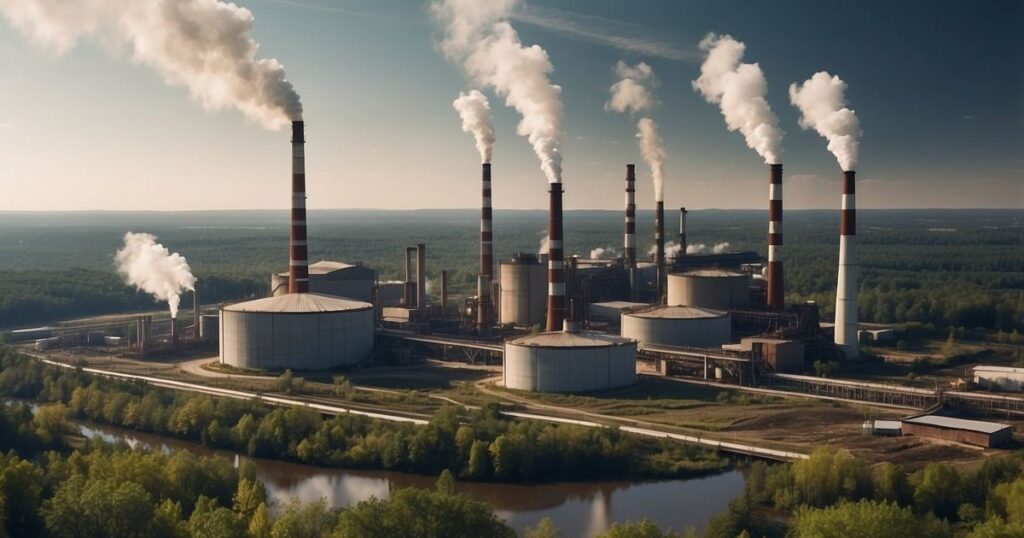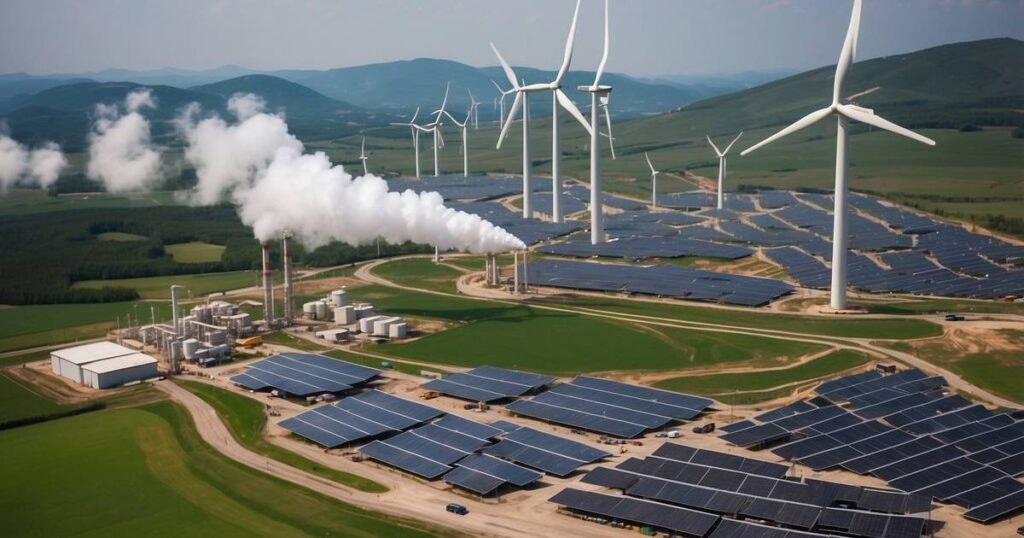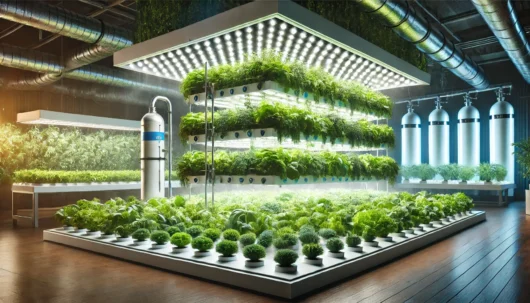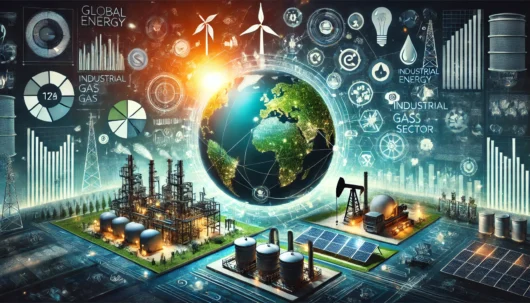Carbon dioxide production has significant environmental implications, particularly concerning climate change and global emissions. Understanding the environmental impact of CO2 production is crucial, as greenhouse gases like carbon dioxide are primary drivers of global warming. The increase in atmospheric CO2 levels due to human activities underscores the urgency to adopt sustainable practices in its production.
In producing beverage-grade CO2, it is essential to consider sustainable CO2 practices. Industrial processes, such as the extraction and burning of fossil fuels, contribute significantly to greenhouse gas emissions. The beverage industry can mitigate its environmental footprint by adopting eco-friendly practices, such as capturing CO2 from existing industrial processes and utilising renewable energy sources.
Implementing sustainable CO2 production methods helps reduce your environmental impact and aligns with global efforts to combat climate change. Adopting such strategies ensures that the industry moves towards a more responsible and sustainable future, reducing the overall contribution to global emissions and mitigating the adverse effects on our planet.
Sources and Global Trends of CO2 Emissions

Carbon dioxide emissions arise from various sources, significantly impacting global climate change. Understanding these sources and the trends in different regions and industries is essential to addressing the challenge effectively.
Fossil Fuels and Industrial Processes
Fossil fuels like coal, oil, and natural gas primarily contribute to CO2 emissions. Coal, a major energy source, produces substantial CO2 output due to its high carbon content. Emissions from oil are also significant, especially in the transportation and heating sectors. Natural gas, while cleaner, still contributes to emissions through energy generation.
Industrial processes further exacerbate the issue. Cement production alone accounts for approximately 8% of global CO2 emissions, as high-temperature kilns release CO2 from combustion and chemical reactions. Similarly, steel and chemicals industries contribute significant emissions, driven by energy-intensive processes and reliance on fossil fuels.
CO2 Emissions by Region and Industry
CO2 emissions vary widely by region and industry. China leads the global emissions due to its heavy reliance on coal and rapid industrialisation. The United States and India follow, driven by substantial energy consumption and industrial activities.
The European Union has seen reduced emissions due to stricter environmental policies and a shift towards renewable energy sources. In Asia, rapid economic growth has spurred increased emissions, with industrial powerhouses contributing significantly. In North America, emissions are relatively high, driven by transportation and industrial sectors.
Different industries contribute disproportionately to CO2 emissions. The energy sector, including coal and natural gas combustion, is a significant source. Industries such as cement, steel, and automobiles produce substantial emissions due to energy-intensive processes and fossil fuel use.
Impact of Population and Economic Growth
Population growth and economic expansion directly influence CO2 emissions. As populations increase, so does energy demand, leading to higher emissions. Countries like China and India highlight this trend, with burgeoning populations driving energy consumption and industrial activities.
Economic growth correlates with greater industrial production, increased vehicle use, and higher energy consumption, contributing to CO2 emissions. Developing nations, as they industrialise and urbanise, witness rapid growth in emissions. Developed regions, while more efficient, still contribute significantly due to high carbon footprints associated with modern lifestyles.
Managing emissions from population and economic growth requires innovation, policy interventions, and a shift towards sustainable energy sources to mitigate the long-term impacts of global warming.
Mitigation Strategies and Technological Innovations

Mitigating the environmental impact of CO2 production involves a combination of advancements in sustainable materials, stringent emission reduction policies, and a fundamental shift towards renewable energy sources.
Advancements in Sustainable Materials
Innovative technologies are revolutionising the production of sustainable materials like green cement and sustainable concrete. These materials, which incorporate recycled industrial waste, significantly reduce construction’s carbon footprint.
Research also focuses on biodegradable materials to replace traditional plastics. Such advancements are crucial for reducing CO2 emissions associated with high energy consumption in production processes.
The development of carbon capture technologies is another remarkable achievement. These systems capture and store CO2 from industrial processes, preventing it from entering the atmosphere.
Emission Reduction Policies and Regulations
Governments worldwide are implementing policies to reduce greenhouse gas emissions. Carbon pricing mechanisms, such as carbon taxes and cap-and-trade systems, incentivise industries to lower their CO2 output.
Regulations are also pushing for the adoption of electric vehicles by setting ambitious emission targets and providing subsidies for EV purchases. These policies encourage the shift away from fossil fuel-dependent cars.
International cooperation is essential. Agreements like the Paris Agreement bind nations to commit to limiting global temperature increases, underscoring the importance of collaborative efforts in addressing climate change.
Energy Production and the Shift to Renewables
The transition towards renewable energy sources is central to reducing CO2 emissions in energy production. Solar and wind power generation has expanded rapidly due to reduced technology costs and increased efficiency.
Biomass, hydrogen, and nuclear energy also play critical roles. Each source contributes to a mixed energy grid that relies less on fossil fuels.
Investment in renewable energy infrastructure by both public and private sectors is crucial. It supports the scaling up of renewable energy projects, ensuring a continuous and reliable supply of clean energy.
Effective mitigation strategies and technological innovations are key to addressing the environmental impact of CO2 production.
Frequently Asked Questions
CO2 emissions have far-reaching consequences, impacting ecosystems, climate, and human health. Understanding the sources, historical trends, and health implications is crucial.
What are the detrimental implications of carbon dioxide emissions on ecosystems?
Elevated CO2 levels can disrupt plant growth, leading to imbalances within ecosystems. Ocean acidification, driven by higher CO2 absorption, jeopardises marine life by decreasing the availability of essential minerals for shell formation.
How do elevated atmospheric CO2 levels contribute to climate change?
Increased CO2 levels trap heat in the atmosphere, leading to a rise in global temperatures. This enhanced greenhouse effect results in more frequent extreme weather events, melting polar ice, and rising sea levels, which collectively alter climate patterns.
In what ways does carbon dioxide impact human health?
Higher CO2 concentrations degrade air quality, exacerbating respiratory conditions like asthma. Climate-related changes linked to CO2 emissions, such as heatwaves and the spread of vector-borne diseases, present additional health risks.
What proportion of atmospheric carbon dioxide is attributed to anthropogenic sources?
Human activities, notably fossil fuel combustion, deforestation, and industrial processes, contribute significantly to atmospheric CO2 levels. It’s estimated that anthropogenic sources are responsible for approximately 75% of current CO2 emissions.
How have changes in CO2 levels historically correlated with shifts in global temperatures?
Historical data indicate a strong correlation between CO2 concentrations and global temperatures. Past periods of high CO2 levels have coincided with warmer climates, reinforcing the role of CO2 in driving temperature changes.
What are the leading factors driving the increase in CO2 production?
Major contributors to rising CO2 levels include the burning of fossil fuels for energy and transportation, deforestation for agriculture and urban development, and industrial activities, such as cement production. Reducing these emissions is vital for mitigating climate change.


